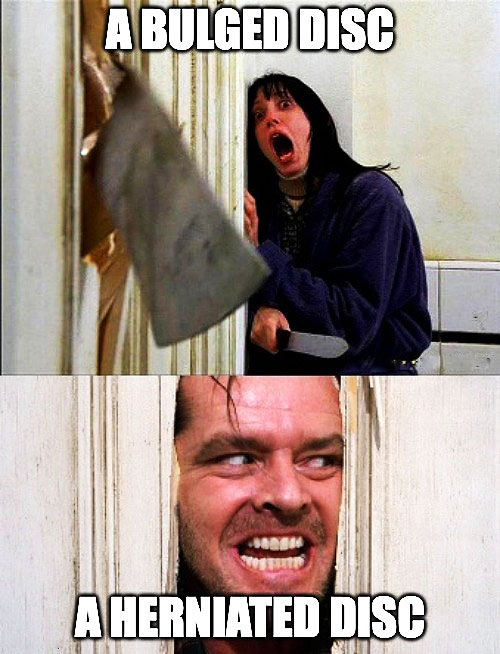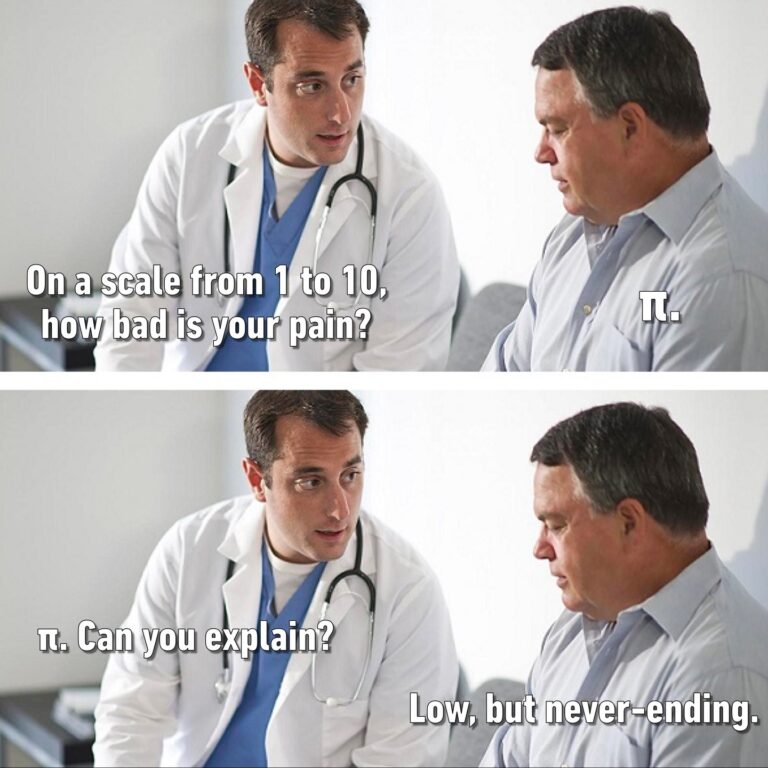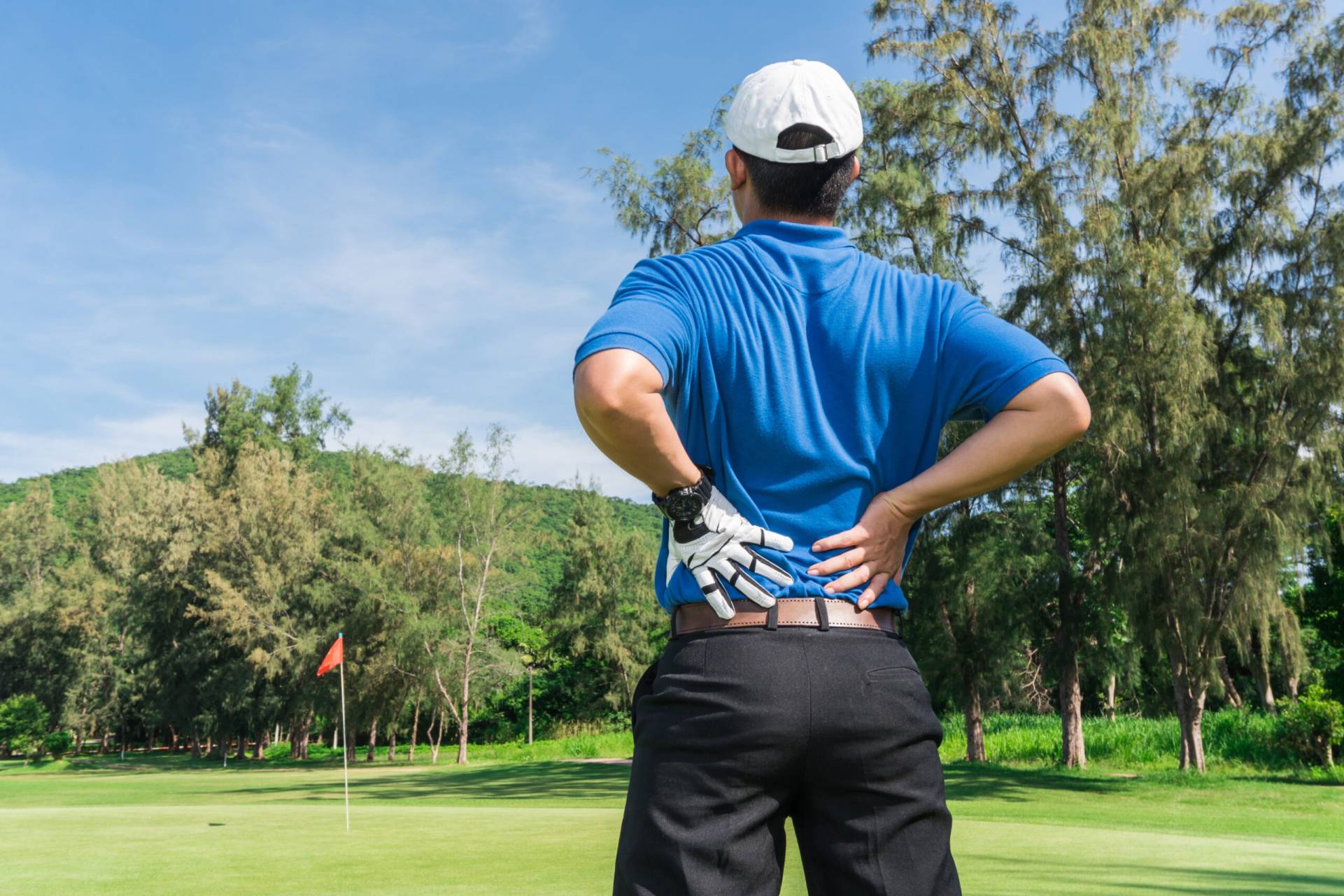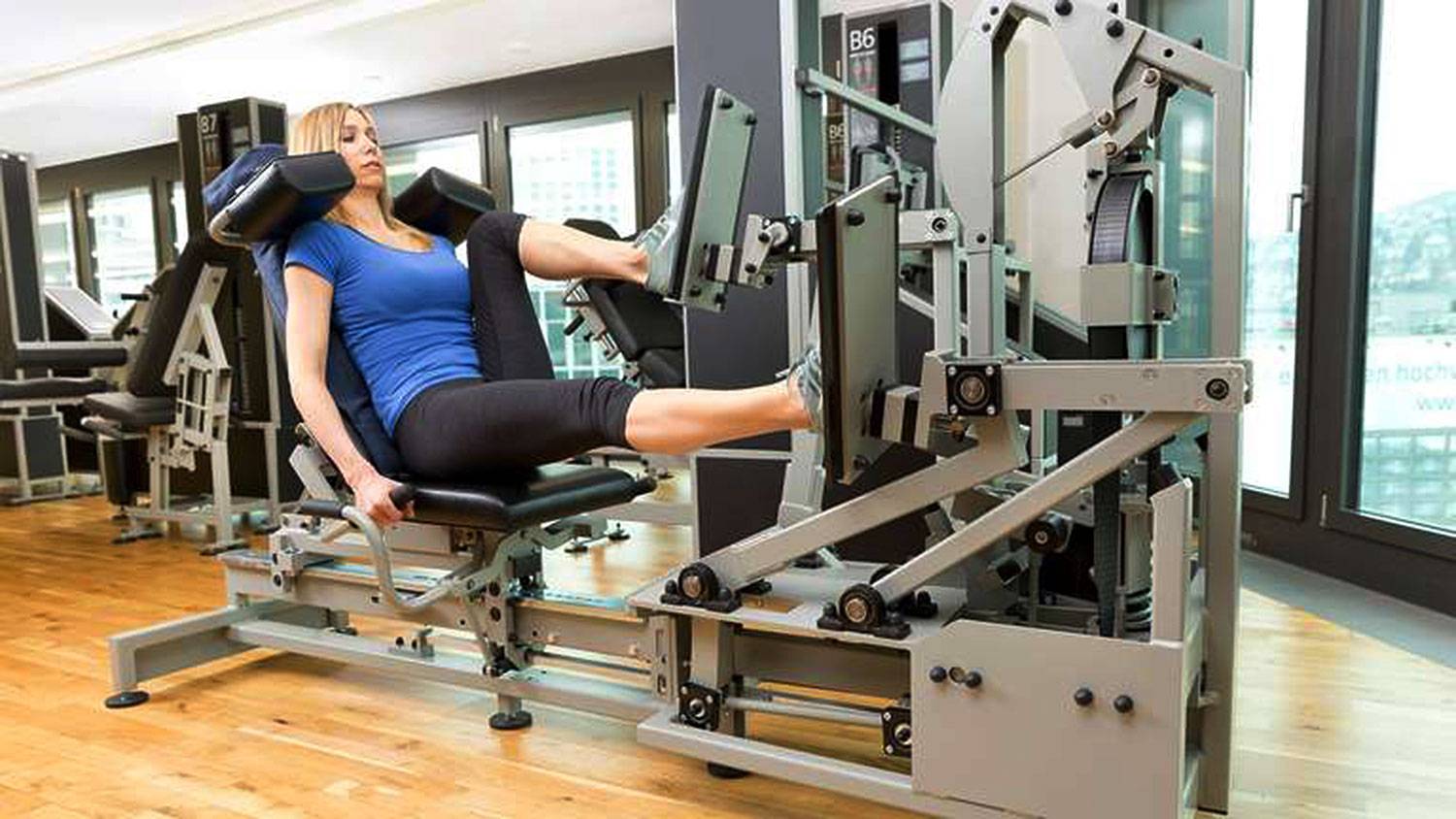a tale of two discs

They are two of the most common terms used to describe low back pain: slipped disc, or herniated disc.
There is no such thing as a slipped disc. Discs can’t slip. Any medical or health professional who attributes your low back pain to a slipped disc is someone you need to run away from as fast as you can.
The lumbar discs are wedged between vertebrae. They are held in place with incredibly strong ligaments, the anterior and posterior longitudinal ligaments. They can’t move. Ever. However, the vertebrae can and do move if their bony architecture is compromised, which can be either a spondylolisthesis or a retrololithesis. The mechanism of injury for these two conditions is very different to that of a disc injury.
What about a herniated disc? Lumbar discs can and do herniate, although far less often than what is described. Most people with disc pathology have a bulging disc, in which the layers of collagen that make up a disc have weakened enough to allow the gelatinous centre of the disc, the nucleus, to distort in shape. Pain from this mechanism of injury can be from spasming of the muscles,and/or the inflammatory process that takes place. A large disc bulge can press on the sciatic nerve, resulting in sciatica.
A herniated disc is the next level of injury above a disc bulge. In this case, the nucleus has actually broken and seeped into the various layers of collagen that make up the disc. It’s a more serious injury than a simple disc bulge, but not nearly as common as described, since it requires a reasonable amount of force to happen.
A disc bulge can happen from a relatively simple task such as bending over to tie shoes or pick a book up off the floor. A disc herniation is more the result of acute trauma, such as a vehicular accident, falling from a height or perhaps a violent sporting movement, or lifting something far heavier than what current capacity allows, as in helping someone move.
Disc injury can often occur at multiple levels, which results in a large degree of instability. Sometimes these multiiple bulges occur in more or less the same time frame, on other occasions they occur long after the initial injury or surgery.
Spinal fusions are often performed to stabilise multiple spinal levels due to disc injury, but in reality, aren’t often necessary, especially if the underlying reason for the disc injury is not addressed during rehabilitation.
Not addressing the reason for the initial injury almost guarantees further surgery, as fixation at one level means the other levels will work harder to make up for the lack of movement.

So why do incorrect terms matter so much?

Terminology relates to knolwedge and professionalism.Using the term “slipped disc” implies that it can be put back into place, fixing your low back pain.
Neither of these is true, and means treatment may continue indefinitely. It also means that a pratitioner is largely responsible for resolving lower back pain, which is the opposite of what should happen.
Using the term “herniated disc” for a lesser injury relates to professionalism. Patients have the right to a correct diagnosis.
Lumbar disc injuries will heal, provided an accurate diagnosis is made, and the underlying reasons for the issue have been found. This allows pain triggers to be minimised or avoided and healing to commence.
This healing takes place regardless of intervention, which is why most people with lower back pain feel better after a period of weeks. Rehabilitation focuses on why the injury occurred in the first place, ensuring it doesn’t become an ongoing issue.



The McGill Big 3 are a starting point in most lower back rehabilitation programs for the simple reason that they work. They begin to help develop the core stability that prevents micro-movements from causing back pain, and the core stiffness needed so that the limbs can function indepenedently.
Back pain isn’t for life – unless you want it to be.
related articles





Golf is perhaps the one sport most closely associated with lower back pain. Around 30% of golfers experience back pain during or after golf. Is this related to the actions of the golf swing itself, or other factors?
Disc injury is the most common form of lower back pain. Bulges, age-related degeneration, lateral herniation and end plate injury are the most likely disc injuries, but the most common is a disc bulge.
A lack of core stability is often cited as one of the most common reasons for lower back pain. Most people, even rehab professionals, are ignorant of true core function and its relevance to lower back injury.
Machine-based training is everywhere claiming the best results for treating lower back pain. for some people, it might work, but it is more likely to aggravate the condition further, and will never future-proof your body for some simple reasons.
A slipped disc is a common but inaccurate diagnosis. Discs can herniate, but true herniation is rare. Terminology matters, as it relates to professionalism and rehabilitation.